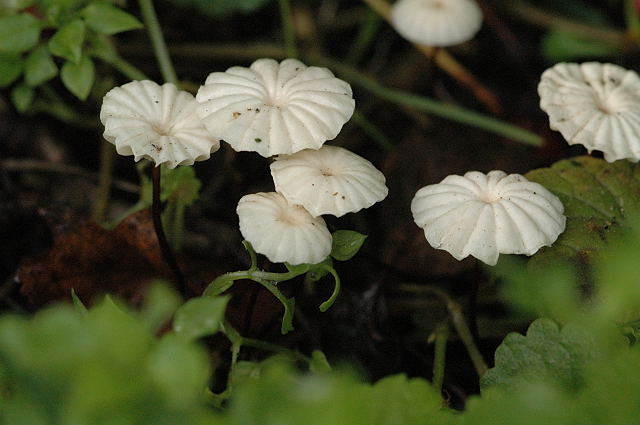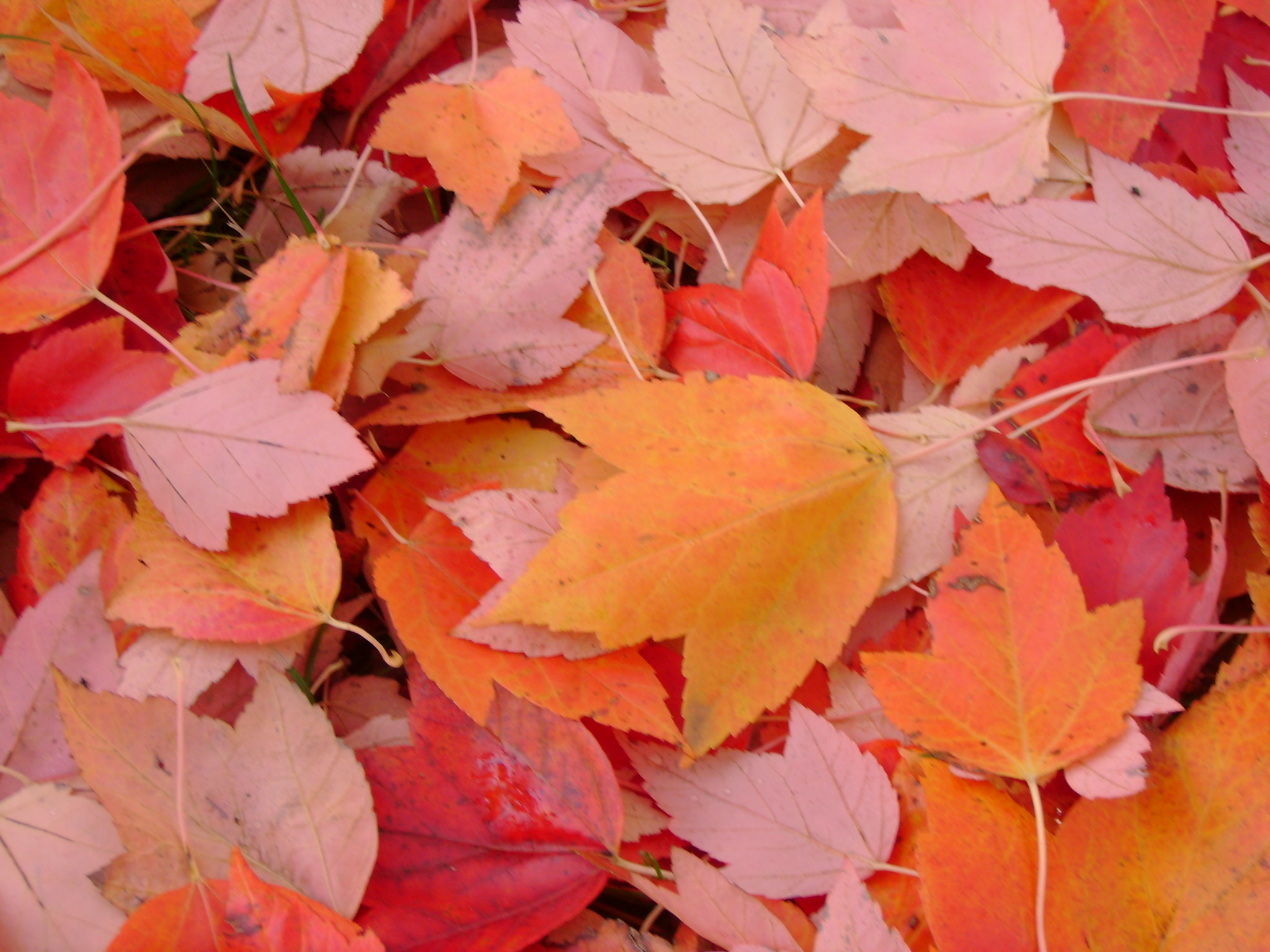|
Marcescence
Marcescence is the withering and persistence of plant organs that normally are shed, and is a term most commonly applied to plant leaves. The underlying physiological mechanism is that trees transfer water and sap from the roots to the leaves through their vascular cells, but in some trees as autumn begins, the veins carrying the sap slowly close until a layer of cells called the abscission layer completely closes off the vein allowing the tree to rid itself of the leaf. Leaf marcescence is most often seen on juvenile plants and may disappear as the tree matures. It also may not affect the entire tree; sometimes leaves persist only on scattered branches. Marcescence is most obvious in deciduous trees that retain leaves through the winter. Trees that exhibit marcescence are known as "everciduous". Several trees normally have marcescent leaves such as oak (''Quercus''), beech (''Fagus'') and hornbeam (''Carpinus''), or marcescent stipules as in some but not all species of willows ... [...More Info...] [...Related Items...] OR: [Wikipedia] [Google] [Baidu] |
Persistence (botany)
Persistence is the retention of plant organs after their normal function has been completed, in contrast with the shedding of deciduous organs after their purpose has been fulfilled. Absence or presence of persistent plant organs can be a helpful clue in plant identification, and may be one of many types of anatomical details noted in the species descriptions or dichotomous keys of plant identification guides. Many species of woody plants with persistent fruit provide an important food source for birds and other wildlife in winter. Species with persistent parts There are numerous herbaceous and woody plant species that produce persistent parts, such as strobili (cones) or fruit. Note that the trait of persistence exhibited by a given species within a genus may not be exhibited by all species within the genus. For example, the ''Equisetum'' genus includes some species that have persistent strobili and others that have deciduous strobili. Persistent strobili The followin ... [...More Info...] [...Related Items...] OR: [Wikipedia] [Google] [Baidu] |
Marasmius
''Marasmius'' is a genus of mushroom-forming fungi in the family Marasmiaceae. It contains about 500 species of agarics, of which a few, such as '' Marasmius oreades'', are edible. However, most members of this genus are small, unimpressive brown mushrooms. Their humble appearance contributes to their not being readily distinguishable to non-specialists, and they are therefore seldom collected by mushroom hunters. Several of the species are known to grow in the characteristic fairy ring pattern. The author of the genus was Elias Magnus Fries, who in 1838 classified white-spored agarics having a tough central stipe in this taxon if they were marcescent, i.e. they could dry out but later revive when moistened. For Fries, marcescence — by contrast with the " putrescent" (decomposing) nature of most mushrooms — was an important character for classification, which he used to separate this group from genus '' Collybia'' (which has now been split into many newer ... [...More Info...] [...Related Items...] OR: [Wikipedia] [Google] [Baidu] |
Abscission
Abscission () is the shedding of various parts of an organism, such as a plant dropping a leaf, fruit, flower, or seed. In zoology, abscission is the intentional shedding of a body part, such as the shedding of a claw, husk, or the autotomy of a tail to evade a predator. In mycology, it is the liberation of a fungal spore. In cell biology, abscission refers to the separation of two daughter cells at the completion of cytokinesis. In plants Function A plant will abscise a part either to discard a member that is no longer necessary, such as a leaf during autumn, or a flower following fertilisation, or for the purposes of reproduction. Most deciduous plants drop their leaves by abscission before winter, whereas evergreen plants continuously abscise their leaves. Another form of abscission is fruit drop, when a plant abscises fruit while still immature, in order to conserve resources needed to bring the remaining fruit to maturity. If a leaf is damaged, a plant may also abscise ... [...More Info...] [...Related Items...] OR: [Wikipedia] [Google] [Baidu] |
Espeletia
''Espeletia'', commonly known as 'frailejones' ("big monks"), is a genus of perennial subshrubs, in the family Asteraceae. The genus, which is native mainly to Colombia, Venezuela and Ecuador, was first formally described in 1808. The genus was named after the viceroy of New Granada, José Manuel de Ezpeleta. The plants live at high altitude in páramo ecosystems. The trunk is thick, with succulent hairy leaves disposed in a dense spiral pattern. Marcescent leaves help protect the plants from cold. The flowers are usually yellow, similar to daisies. Some members of the genus exhibit a caulirosulate growth habit. The frailejón plant is endangered due to destruction of the páramo for agricultural purposes, especially potato crops. This activity continues, despite the Colombian government declaring it illegal. Since about 2010 the plants have also come under attack by beetle larvae, a moth and a fungus, some new to science but suspected to be related to climate change ... [...More Info...] [...Related Items...] OR: [Wikipedia] [Google] [Baidu] |
Decomposition
Decomposition or rot is the process by which dead organic substances are broken down into simpler organic or inorganic matter such as carbon dioxide, water, simple sugars and mineral salts. The process is a part of the nutrient cycle and is essential for recycling the finite matter that occupies physical space in the biosphere. Bodies of living organisms begin to decompose shortly after death. Animals, such as worms, also help decompose the organic materials. Organisms that do this are known as decomposers or detritivores. Although no two organisms decompose in the same way, they all undergo the same sequential stages of decomposition. The science which studies decomposition is generally referred to as ''taphonomy'' from the Greek word ''taphos'', meaning tomb. Decomposition can also be a gradual process for organisms that have extended periods of dormancy. One can differentiate abiotic decomposition from biotic decomposition ( biodegradation). The former means "the degradat ... [...More Info...] [...Related Items...] OR: [Wikipedia] [Google] [Baidu] |
Plant Litter
Plant litter (also leaf litter, tree litter, soil litter, litterfall or duff) is dead plant material (such as leaves, bark, needles, twigs, and cladodes) that have fallen to the ground. This detritus or dead organic material and its constituent nutrients are added to the top layer of soil, commonly known as the litter layer or O horizon ("O" for "organic"). Litter is an important factor in ecosystem dynamics, as it is indicative of ecological productivity and may be useful in predicting regional nutrient cycling and soil fertility. Characteristics and variability Litterfall is characterized as fresh, undecomposed, and easily recognizable (by species and type) plant debris. This can be anything from leaves, cones, needles, twigs, bark, seeds/nuts, logs, or reproductive organs (e.g. the stamen of flowering plants). Items larger than 2 cm diameter are referred to as coarse litter, while anything smaller is referred to as fine litter or litter. The type of litterfa ... [...More Info...] [...Related Items...] OR: [Wikipedia] [Google] [Baidu] |
Photodegradation
Photodegradation is the alteration of materials by light. Commonly, the term is used loosely to refer to the combined action of sunlight and air, which cause oxidation and hydrolysis. Often photodegradation is intentionally avoided, since it destroys paintings and other artifacts. It is, however, partly responsible for remineralization of biomass and is used intentionally in some disinfection technologies. Photodegradation does not apply to how materials may be aged or degraded via infrared light or heat, but does include degradation in all of the ultraviolet light wavebands. Applications Foodstuffs The protection of food from photodegradation is very important. Some nutrients, for example, are affected by degradation when exposed to sunlight. In the case of beer, UV radiation causes a process that entails the degradation of hop bitter compounds to 3-methyl-2-buten-1-thiol and therefore changes the taste. As amber-colored glass has the ability to absorb UV radiation, beer bottles a ... [...More Info...] [...Related Items...] OR: [Wikipedia] [Google] [Baidu] |
Growth Form
Plant life-form schemes constitute a way of classifying plants alternatively to the ordinary species-genus-family scientific classification. In colloquial speech, plants may be classified as trees, shrubs, herbs (forbs and graminoids), etc. The scientific use of life-form schemes emphasizes plant function in the ecosystem and that the same function or "adaptedness" to the environment may be achieved in a number of ways, i.e. plant species that are closely related phylogenetically may have widely different life-form, for example '' Adoxa'' and ''Sambucus'' are from the same family, but the former is a small herbaceous plant and the latter is a shrub or tree. Conversely, unrelated species may share a life-form through convergent evolution. While taxonomic classification is concerned with the production of natural classifications (being natural understood either in philosophical basis for pre-evolutionary thinking, or phylogenetically as non-polyphyletic), plant life form classificat ... [...More Info...] [...Related Items...] OR: [Wikipedia] [Google] [Baidu] |
Dypsis
''Dypsis'' is a genus of flowering plants in the family Arecaceae. They are slender, evergreen palms with yellow flowers carried in panicles amongst the pinnate leaves. Many ''Dypsis'' species have aerial branching (above the main trunk), a rare growth habit among palms. Some have marcescent leaves that remain attached after death and trap litter for nutrients. Etymology The etymology is obscure but may be related to the Greek ' ‘I dive’ or ' ‘diver’. The species are native to Tanzania, Madagascar, and various islands in the Indian Ocean (Mauritius and Comoros). A few are naturalized in other regions, especially in the Caribbean The Caribbean (, ) ( es, El Caribe; french: la Caraïbe; ht, Karayib; nl, De Caraïben) is a region of the Americas that consists of the Caribbean Sea, its islands (some surrounded by the Caribbean Sea and some bordering both the Caribbean .... Selected species References Arecaceae genera Trees of Africa Taxonomy articl ... [...More Info...] [...Related Items...] OR: [Wikipedia] [Google] [Baidu] |
Andes
The Andes, Andes Mountains or Andean Mountains (; ) are the longest continental mountain range in the world, forming a continuous highland along the western edge of South America. The range is long, wide (widest between 18°S – 20°S latitude), and has an average height of about . The Andes extend from north to south through seven South American countries: Venezuela, Colombia, Ecuador, Peru, Bolivia, Chile, and Argentina. Along their length, the Andes are split into several ranges, separated by intermediate depressions. The Andes are the location of several high plateaus—some of which host major cities such as Quito, Bogotá, Cali, Arequipa, Medellín, Bucaramanga, Sucre, Mérida, El Alto and La Paz. The Altiplano plateau is the world's second-highest after the Tibetan plateau. These ranges are in turn grouped into three major divisions based on climate: the Tropical Andes, the Dry Andes, and the Wet Andes. The Andes Mountains are the highest m ... [...More Info...] [...Related Items...] OR: [Wikipedia] [Google] [Baidu] |
Deer
Deer or true deer are hoofed ruminant mammals forming the family Cervidae. The two main groups of deer are the Cervinae, including the muntjac, the elk (wapiti), the red deer, and the fallow deer; and the Capreolinae, including the reindeer (caribou), white-tailed deer, the roe deer, and the moose. Male deer of all species (except the water deer), as well as female reindeer, grow and shed new antlers each year. In this they differ from permanently horned antelope, which are part of a different family ( Bovidae) within the same order of even-toed ungulates (Artiodactyla). The musk deer (Moschidae) of Asia and chevrotains ( Tragulidae) of tropical African and Asian forests are separate families that are also in the ruminant clade Ruminantia; they are not especially closely related to Cervidae. Deer appear in art from Paleolithic cave paintings onwards, and they have played a role in mythology, religion, and literature throughout history, as well as in herald ... [...More Info...] [...Related Items...] OR: [Wikipedia] [Google] [Baidu] |





.jpg)
.jpg)